When is the best time to visit Spain? With many factors at play and depending on the type of itinerary in mind, there could be more than one answer to this question. But fear not. We’re here to help you decide when to visit Spain, one of the most fascinating countries in Europe.
Although Spain is considered a hot country, it’s not T-shirt weather all year. While winters are mild with plenty of sunny days, temperatures do peter off after lush springs, scorching summers, and comfortable falls. Of course, patterns vary considerably in different climate zones.
Another thing to keep in mind when choosing the best time to visit Spain is the nation’s popularity. Spain has a four-season appeal but July, August, and early September usher the bulk of travelers. Warmer regions, such as the Canary Islands and the Mediterranean South, also see a spike in visitors seeking the winter sun.
Culture-focused travelers might want to visit Spain in conjunction with one of the country’s fascinating festivals, yet another aspect to consider when deciding when to visit Spain.
As for Spain’s headliner tourist attractions, such as Granada’s Alhambra, Seville’s Alcazar, and Barcelona’s Sagrada Familia to name a few, worry not. These stay open all year.
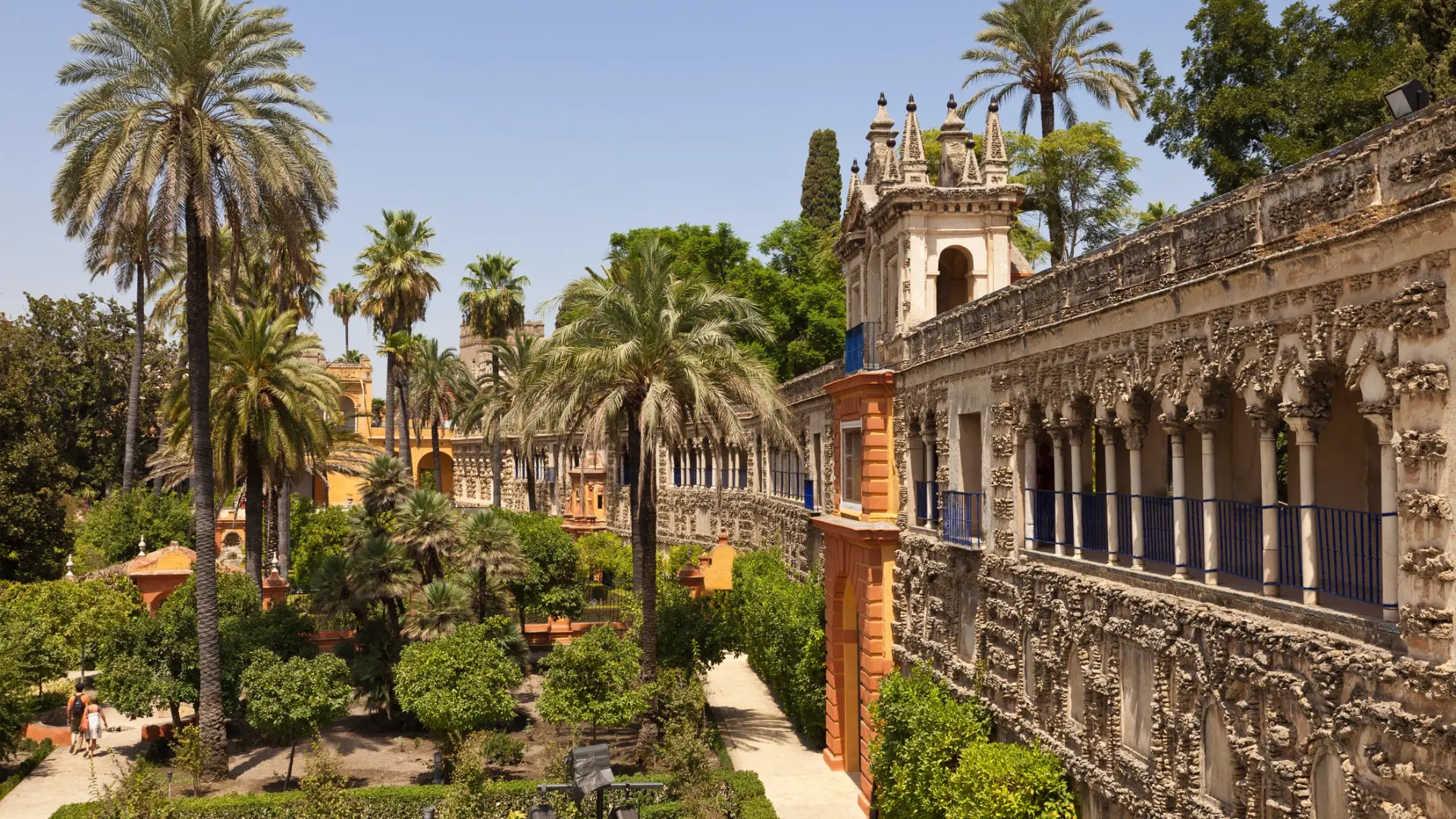
Jump to a section of this article
An Overview of The Weather & Climate in Spain
Spain experiences four seasons and a diverse climate dominated by Mediterranean, continental, and oceanic zones. Other areas follow mountain, subtropical, and even steppe climates.
Southern Spain’s autonomous region of Andalusia is the hottest mainland destination. Malaga, Marbella, and the Costa del Sol hover around 60°F in winter, with summers creeping over 100°F.
The Canary Islands are the hottest place in Spain. Winters are only marginally cooler than summers there. Dusty trade winds known as the Calima phenomenon can strike in winter, but, otherwise, the seven islands remain hot and dry all year.
The Balearic Islands enjoy dry, balmy summers and mild Mediterranean winters. The Catalan and Valencian coastal areas have hot summers, while winters are chilly and damp. Madrid and other areas in Central Spain are prone to hot summers, frigid winters, and delightful shoulder seasons.
Northern Spain’s Atlantic coast and mountainous zones see the lowest temperatures in all seasons. Summers in Galicia, Asturias, Cantabria, and the Basque country fluctuate between 61°F and 77°F whereas winters see an average temperature of around 50°F.
Rain, fog, and clouds are prevalent all year round but these humid conditions only add to the enchantment of Green Spain, as the north of Spain is also known.
No matter when you’re visiting Spain though, the country has plenty of indoor activities to keep you busy even when the weather isn’t on your side. A rainy day is the perfect excuse to gorge on tapas, meander art galleries, or catch a flamenco show.
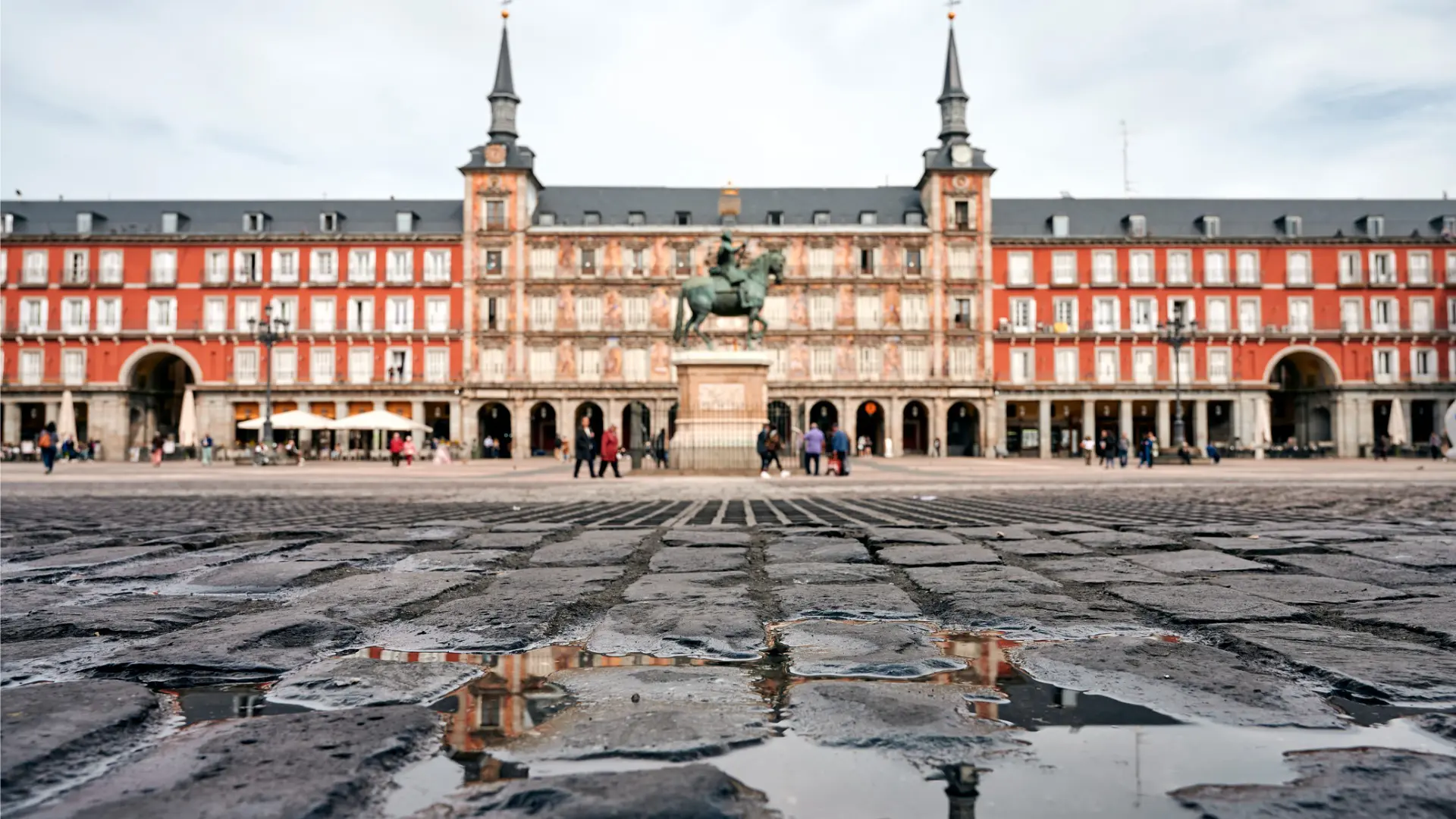
Spring Is The Best Time To Visit Spain For Weather & Culture
Spring is the best time to travel to Spain overall, especially if you’re planning a multi-city itinerary. This shoulder season sees major cities shrug off the thaw of winter with floral displays while wildflowers coat the countryside. Seasonal greens dictate restaurant menus and there are copious outdoor activities and festivals.
March, a transitional month, brings fickle weather. Rain is likelier although it doesn’t tend to linger and most parts of Spain are warm compared to Northern Europe and North America.
April is drier with comfortable temperatures rising to 70°F. May is a glorious time to visit Spain for great weather and hiking amid highs of 79°F in select regions.
Urban sightseeing can be punctuated with al fresco Tinto de Verano and people-watching in parks and squares. The crossroads between late spring and early summer introduce the prospect of ocean swimming while spring is a great time to visit Spain for cultural events.
Semana Santa – Spain’s Easter Holy Week – is typically a time for families although tourists are welcome to observe religious events and public festivities. It’s a golden opportunity to sample Torrijas, Buñuelos, Pavias, and Monas de Pascua.
In Valencia, the traditional celebration of Las Fallas sees wood and papier-mâché sculptures paraded in the streets before being ceremonially burnt.
Seville’s April Fair floods plazas with flamenco performances, folk music, and sherry tastings. In Madrid, locals wear celebratory costumes and embrace tradition during the Feast Day of Saint Isidro every May.
Spain is a wonderful destination for cycling or golfing and either shoulder season supports an activity-led itinerary. The climate lends itself to visiting interior cities, coastal towns, the green north, and islands in equal measure.

Best Places To Visit in Spain in Spring (March, April, May)
Late spring or early summer is the perfect time to visit any of Spain’s favorite tourist destinations but here’s a small selection of the best places to visit in Spain in spring:
- Costa Brava: Extend a spring jaunt to Barcelona with a trip to Spain’s oldest Roman settlement, Tarragona, and Figueres, the birthplace of Salvador Dali.
- Santiago de Compostela: This Galician pilgrimage city and burial site of the apostle St. James flourishes during Semana Santa.
- Camino de Santiago: Spring is also the best time of year to hike Spain’s iconic walking trails.
- Ronda: Andalusia’s pueblos blancos (white villages) are graced with bluebird skies and spring blossoms.
- Cordoba: Beat the summer lines at the Mosque-Cathedral and swoon over spring blooms at the UNESCO-inscribed Cordoba Patios Festival.
- Bilbao: Spring in the Basque Country capital is fresh yet drier than fall and packed with offbeat cultural attractions besides the Guggenheim.
- Doñana National Park: This protected wetland bursts into a symphony of color and spring is prime time for bird watching.
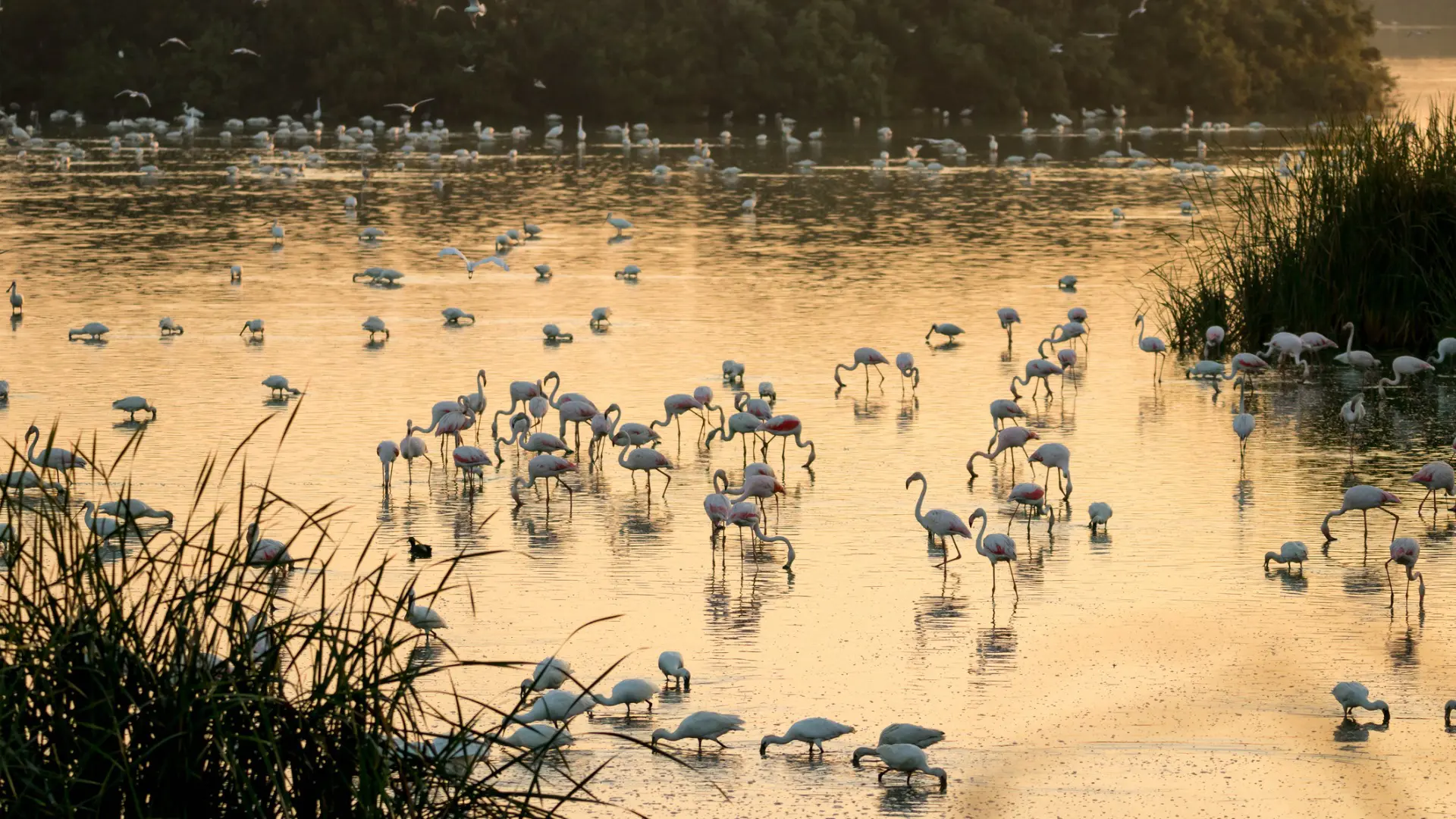
Summer Is Best For a Beach Vacation in Spain
Besides its culinary and cultural appeal, Spain is a perennial pick for a relaxing seaside vacation and summer is the best time for beaches, swimming, sailing, and watersports.
Summer in Spain refers to June, July, and August although conditions overlap with the tail end of spring and early fall.
Picking up where May left off, June lavishes sensational weather across Spain. This is a fantastic month to visit anywhere in Spain before the onset of high season. It’s the driest month overall and all three coasts are warm enough for swimming.
July and August are extremely busy months and it’s wise to choose lesser-known destinations during the peak season. Costa Blanca and Costa Brava are somewhat calmer than Costa del Sol and La Barceloneta while fewer international tourists venture to Costa del Azahar.
Summer delivers the driest, warmest weather to the misty Cantabrian Coast. Unspoiled and often overlooked, Northern Spain is a fine choice for a peaceful summer getaway.
Despite the explosion in sunseekers, Spain’s seaside atmosphere is eclectic. Freshly caught sardines sizzle at beachside huts in Malaga while kayaks and catamarans scale the sea cliffs at Cap De Creus and Cabo de Gata-Nijar.
Devising a luxury-based vacation is a strategic way to avoid Spain’s summer crowds. At JayWay Travel, we can create a dreamy itinerary of private yacht charters, bespoke walking tours, and VIP car services that skirt around the hotspots and help you brace the summer heat.
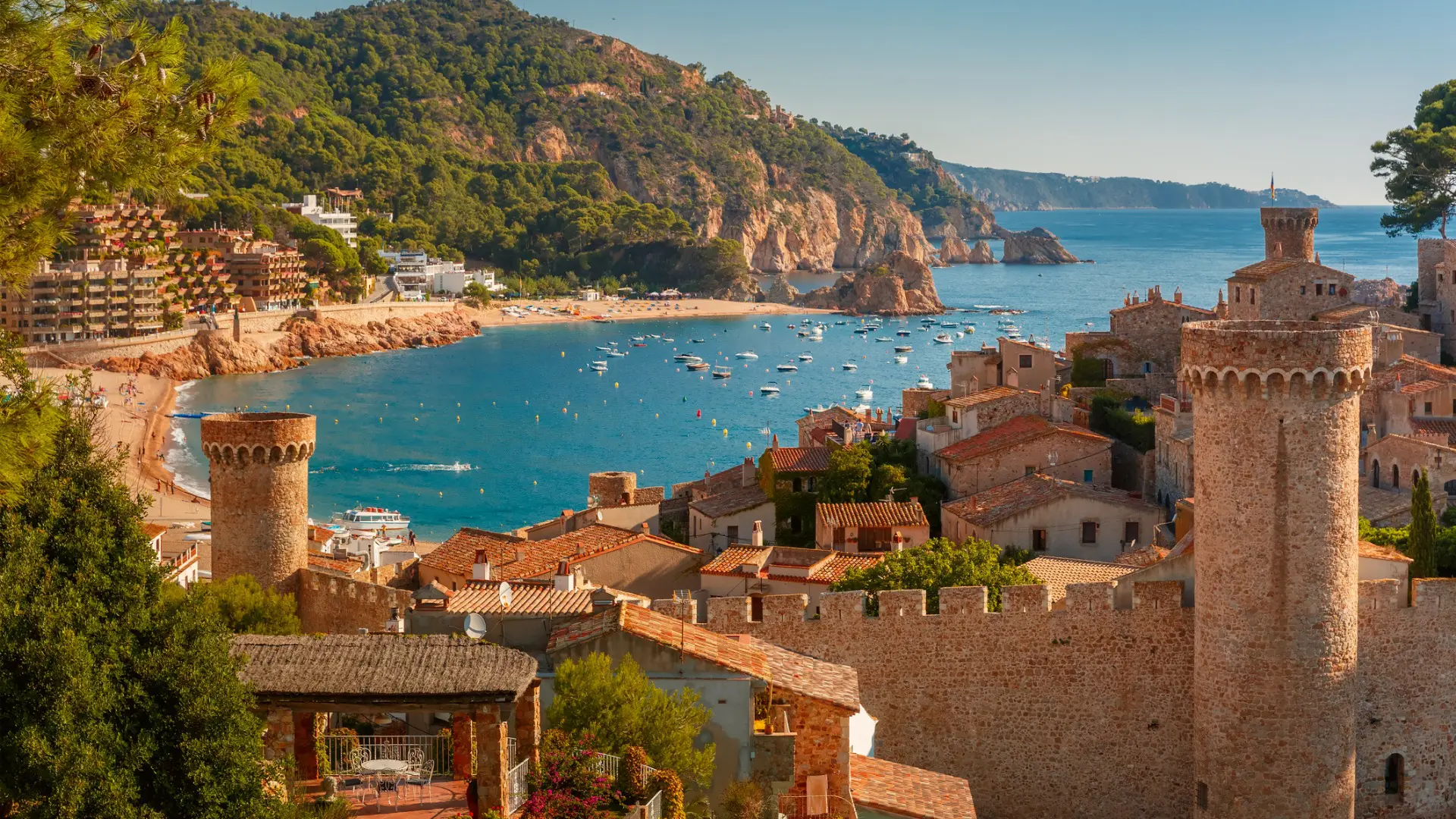
Best Places To Visit in Spain in Summer (June, July, August)
- San Sebastian: This trendy food destination also claims one of Spain’s most beautiful beaches, the crescent-shaped La Concha.
- Costa del Azahar: Stretching from Castellon to Vinaros, the Orange Blossom Coast is backed by rugged mountains and abundant in watersports and hiking activities.
- Asturias: Summer brings the driest conditions to this green coastline and is perfect for exploring the fishing villages of Gijon, Ribadesella, Lastres, and Cadaveu.
- Galicia: Far quieter than southern Spain and the islands, the country’s northwest corner is marked by powdery white beaches and natural rock cathedrals.
- Marbella: It’s a busy time to visit Spain’s upscale sailing and golfing resort but the ritzy summer atmosphere is second to none.
- Balearic Islands: The warm weather sees beach clubs in full swing while northern Ibiza and western Mallorca villages are quieter than the party hubs.
- Buñol: Partake in August’s La Tomatina tomato-throwing festival.

Fall Is When To Visit Spain For Harvest Events & Gastronomy
Fall joins spring as the best time to visit Spain for pleasant weather as well as smaller crowds.
This season mimics spring in reverse with high temperatures gradually cooling. It’s a great opportunity for autumnal culture and getting outdoors before temperatures fall in the central and northern regions.
Many parts of Spain are subject to rain in October and November and fall is the wettest season in Malaga, Valencia, Seville, and Ibiza. For the most part, precipitation is short and sweet. The secret is to time any showers around meals and museums.
Autumn is a good time to experience Spain’s harvest season. Travelers can join in with picking grapes, olives, and citrus fruit and soak up the seasonal merriment. Of course, gastronomy is a year-round activity in Spain; wineries and sherry bodegas are open all year.
As the high summer temperatures will have heated the sea, swimming is possible until late October in Mediterranean areas. Mid-fall is usually a better time for swimming than mid-spring although it may be too cold for children.
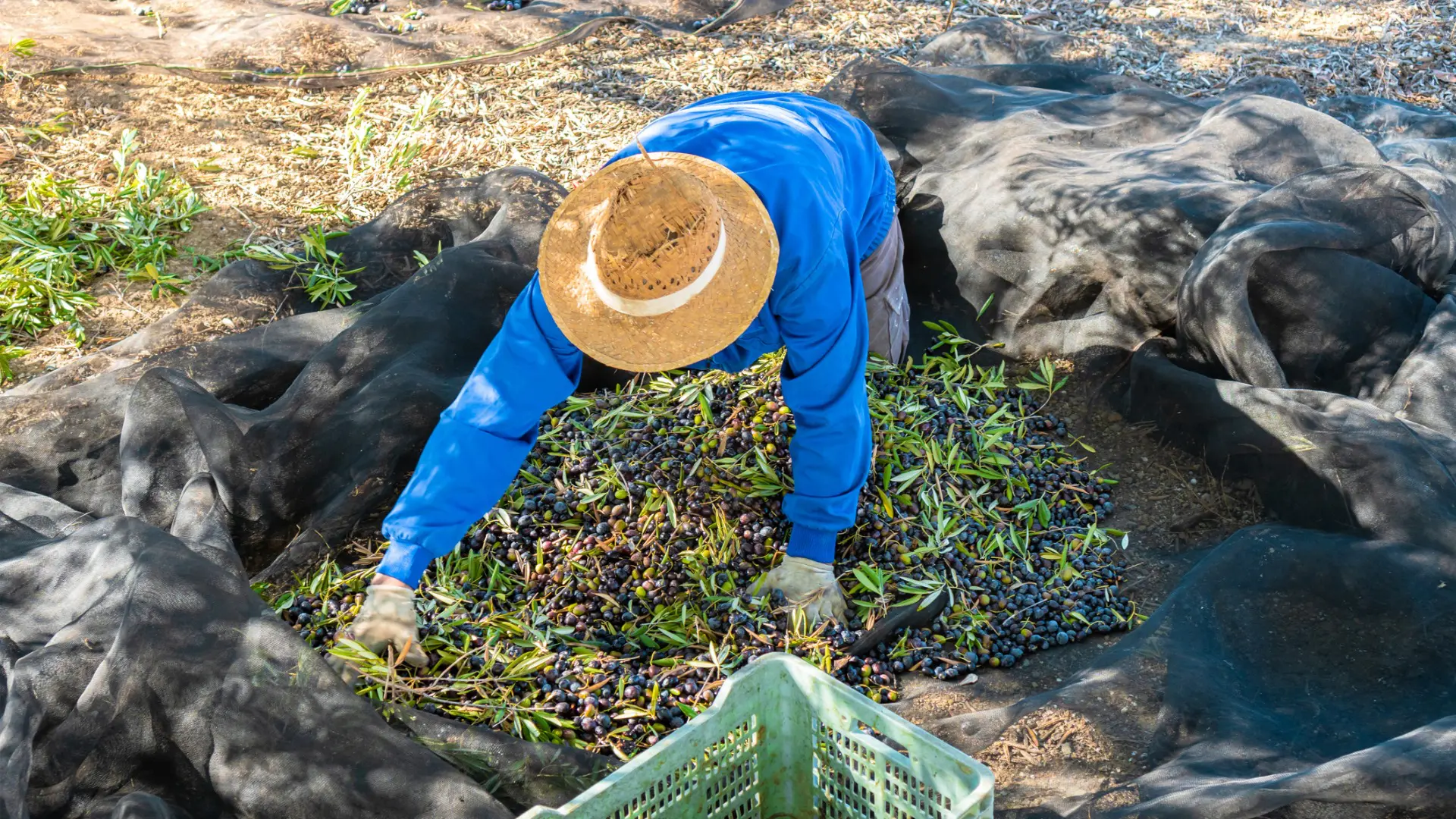
Best Places To Visit in Spain in Fall (September, October, November)
- Madrid: As summer subsides, the capital erupts with golden hues and the Madrid Autumn Festival.
- Toledo: An easy side trip from Madrid, the imperial city is packed with Christian, Jewish, and Islamic landmarks.
- Valencia: The orange harvest starts in October or November and brings pick-your-own opportunities in the region. That said, the blood orange season occurs in spring.
- La Rioja: Celebrate the wine season through tastings, cultural performances, processions, and music events at the San Mateo Festival in Logroño.
- Jerez de la Frontera: International Sherry Week is a major draw for existing fans and anyone looking to start their sherry education.
- Zaragoza (Saragossa): This underrated city is rich in Roman heritage and Mudejar architecture with a buzz during October’s Fiestas del Pilar.
- Cadiz: The southwest Atlantic city is glorious under the autumn sun and makes for creative photography over the fortified Old Town and beaches.
- Costa del Sol: Summer lasts a little longer in Spain’s Sun Coast and crowds thin from late September onwards.
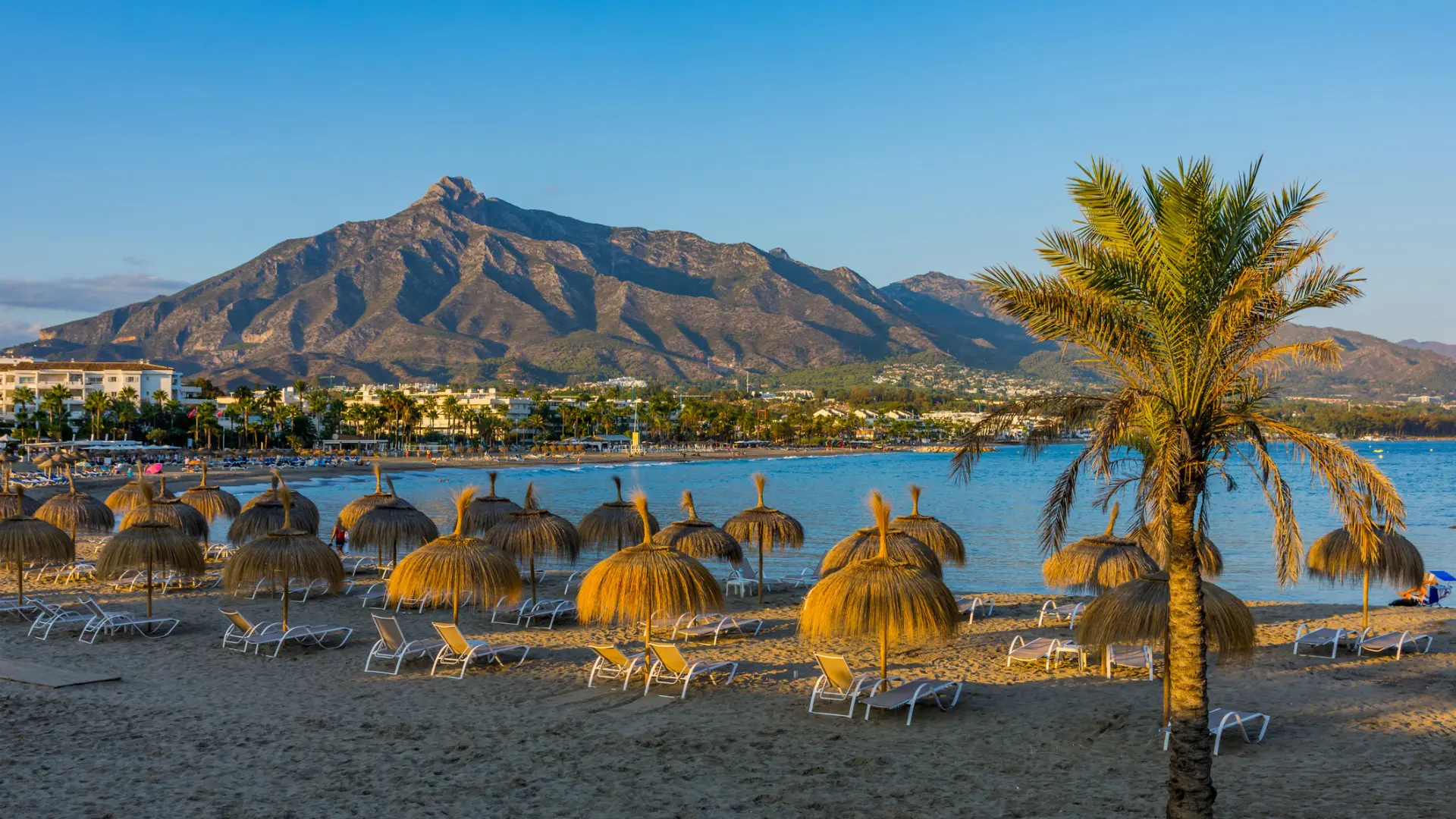
Winter Is The Best Time To Visit Spain Without Crowds
The low season of winter is when to visit Spain for the quietest travel experience with fewer tourists.
Mediterranean coastal areas welcome mild winters that are generally sunny with occasional cloud cover and rainy spells. Beach resorts are hushed between November and February with only the bravest venturing out to swim. Sunbathing is out for winter but promenade walks, cycling tours, and cultural sightseeing are in.
Northern Spain is cold in winter with reduced sunshine hours and persistent cloud cover and mist. It can be spine-tinglingly atmospheric and may feel warmer than Northern Europe and the United States but, still, it’s not the best time to visit Spain’s Atlantic coast.
Madrid and the surrounding areas are cold during winter, with average lows of 43ºF. Warm clothing and regular stops for Churros con Chocolate are key to comfort.
On the bright side, Madrid and other larger cities are full of festive cheer as colorful markets and ice skating rinks pop up in time for Christmas and New Year’s, while hammam bathhouses in Madrid, Granada, Cordoba, and Malaga help brace the cooler weather.
Seville, Costa del Sol, Alicante, and Almeria are the warmest places to visit in mainland Spain in winter. The Canary Islands experience an almost-eternal summer with the best surfing in winter.
In contrast to the Mediterranean coast and the subtropical Canaries, the Sierra Nevada and Pyrenees are blanketed in snow from late November with ski season peaking in January and February.
So, even though Spain might not be your typical winter sports – or festive markets – destination, why not go off-piste?
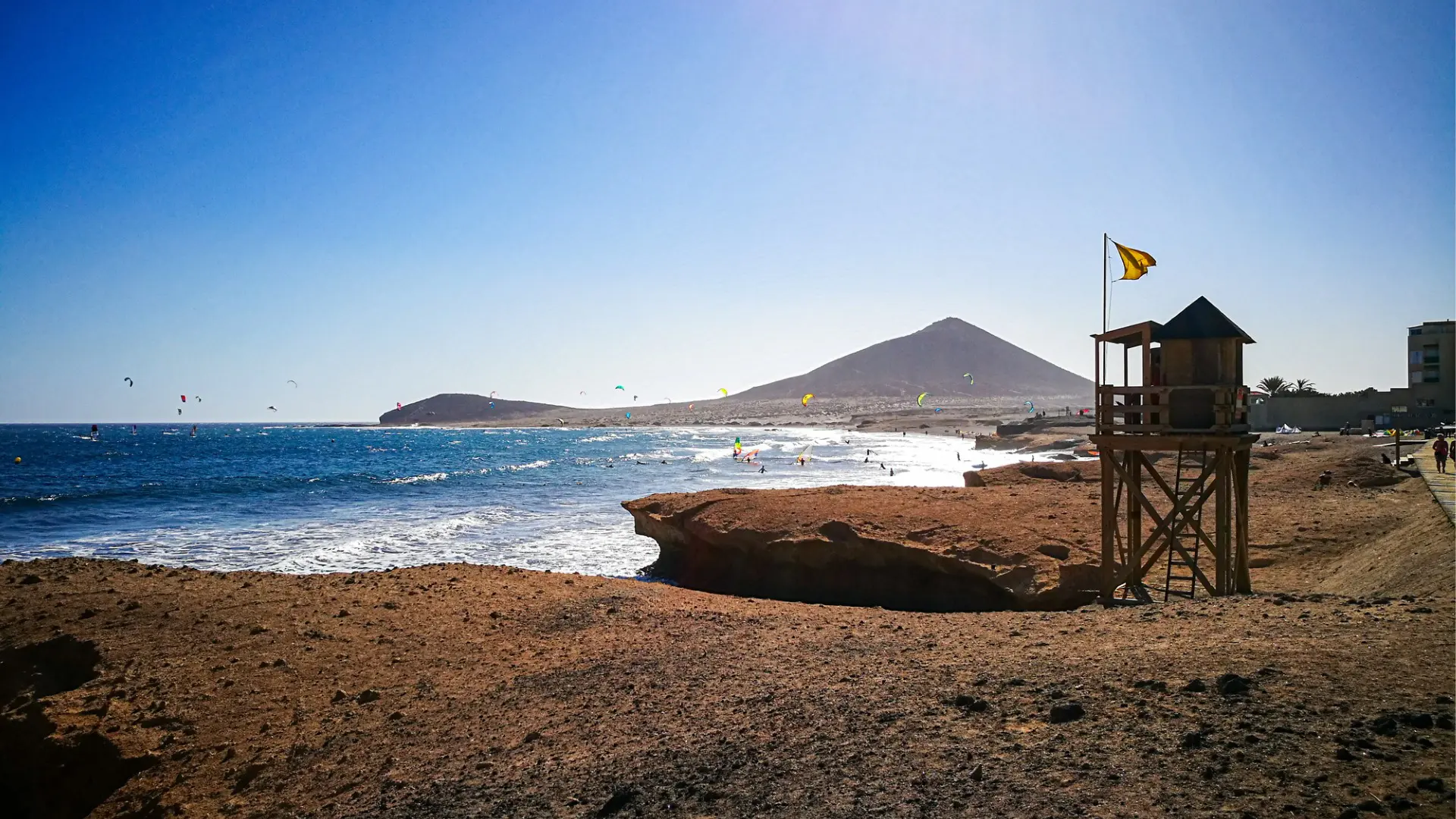
Best Places To Visit in Spain in Winter (December, January, February)
- Seville: The architectural gem shines with winter sun and rarely drops below 61°F.
- Barcelona: The mild climate lends itself to touring Gaudi’s landmarks with fewer crowds and basking on empty beaches.
- Granada: It’s hard to beat a view of the Alhambra against the snowy Sierra Nevada ranges.
- Almeria: The arid micro-climate provides the most hospitable environment in the Tabernas Desert.
- Canary Islands: Winter breezes over the subtropical archipelago and it’s possible to swim in the sea without shivering.
- Sierra Nevada Mountains: Hit the slopes by day and savor seafood on the Costa del Sol at night.
- La Molina: Spain’s oldest ski resort is located in the Pyrenees with pistes for all levels, plus snowshoeing and panoramic gondolas.
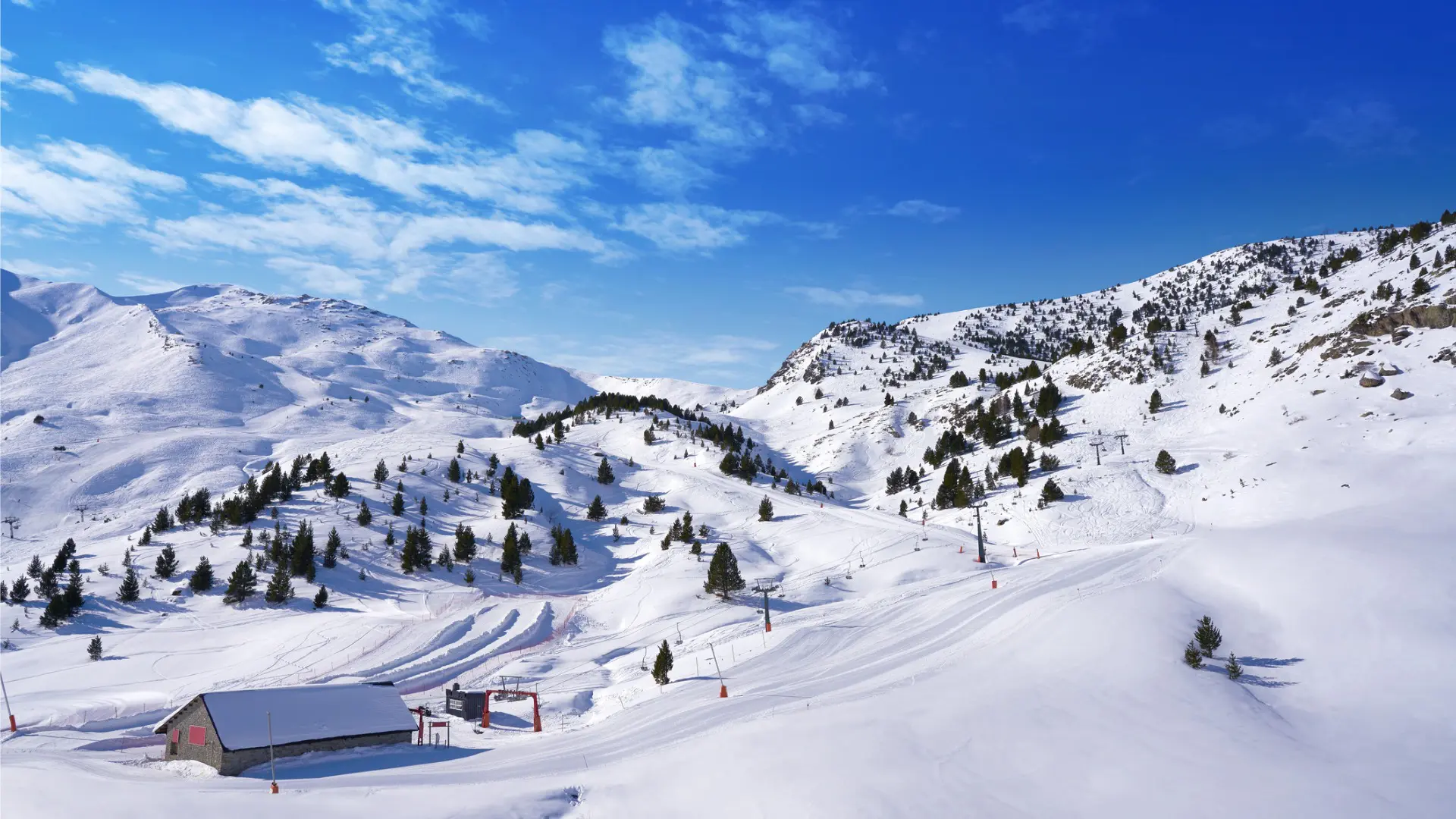
Visit Spain Any Time of The Year With JayWay
Hopefully, deciding when to visit Spain doesn’t sound that difficult now, does it? No matter what time of the year you travel to Spain though, you’re in good hands.
At JayWay Travel, we know Spain quite well and our expert local team on the ground will be on hand for weather advice and recommendations on the best cultural, culinary, and nature-themed events and festivals that you can join, depending on the month and regions you’re visiting.
Whether it’s a city-focused trip or a journey through the entire country from north to south you’re dreaming of, JayWay will help you decide on the best time to visit Spain before crafting the perfect Spain itinerary, tailored to your needs and desires.

Born and raised in Athens, Maria’s passionate about travel and storytelling, a combination that makes her ideal for her role as our content manager.